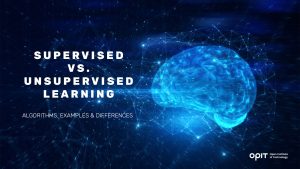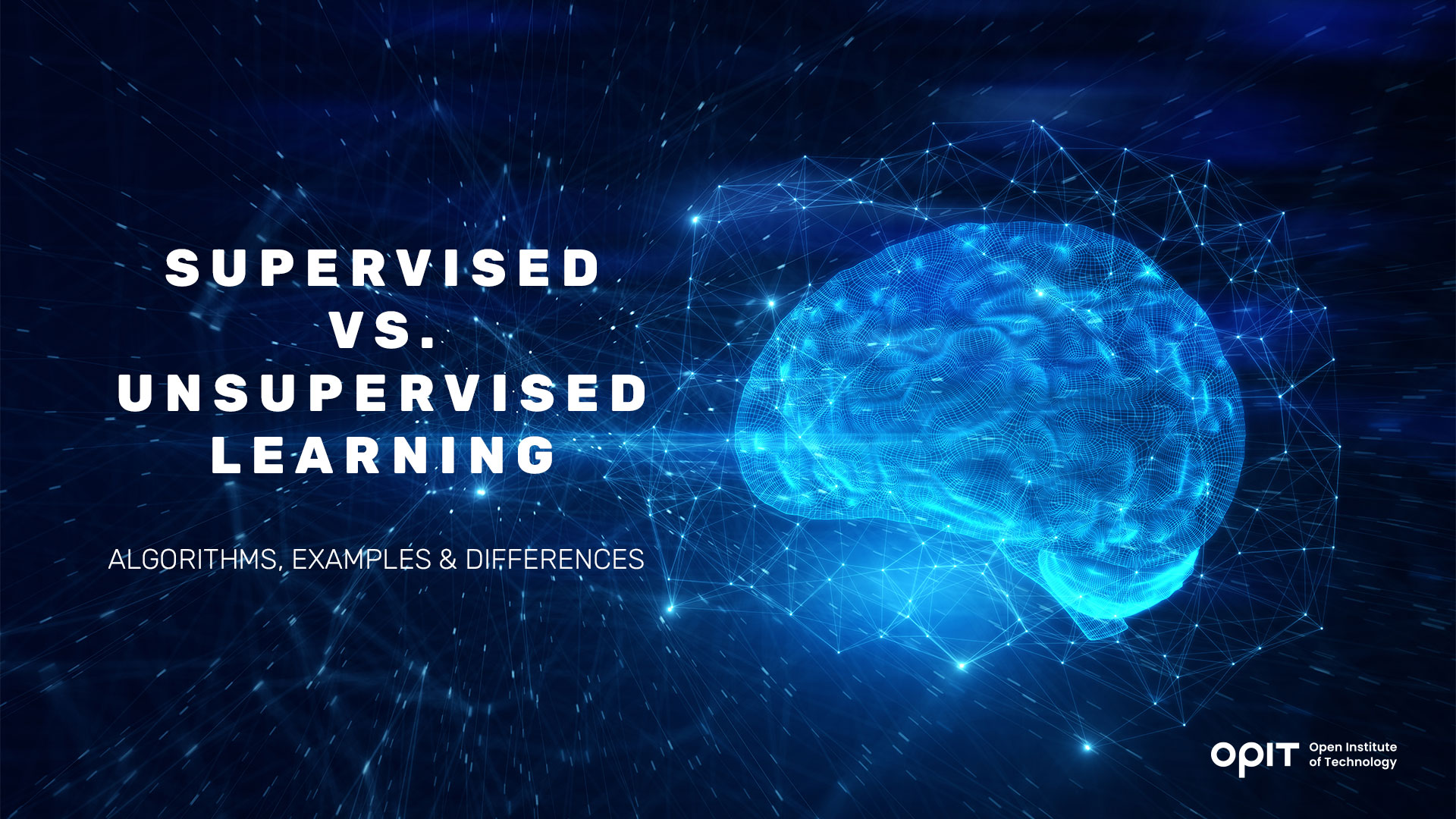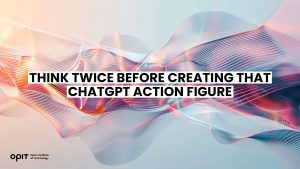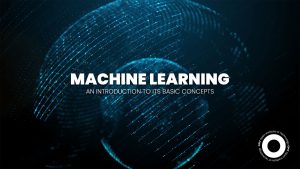Read the full article below (in Italian):


The human brain is among the most complicated organs and one of nature’s most amazing creations. The brain’s capacity is considered limitless; there isn’t a thing it can’t remember. Although many often don’t think about it, the processes that happen in the mind are fascinating.
As technology evolved over the years, scientists figured out a way to make machines think like humans, and this process is called machine learning. Like cars need fuel to operate, machines need data and algorithms. With the application of adequate techniques, machines can learn from this data and even improve their accuracy as time passes.
Two basic machine learning approaches are supervised and unsupervised learning. You can already assume the biggest difference between them based on their names. With supervised learning, you have a “teacher” who shows the machine how to analyze specific data. Unsupervised learning is completely independent, meaning there are no teachers or guides.
This article will talk more about supervised and unsupervised learning, outline their differences, and introduce examples.
Supervised Learning
Imagine a teacher trying to teach their young students to write the letter “A.” The teacher will first set an example by writing the letter on the board, and the students will follow. After some time, the students will be able to write the letter without assistance.
Supervised machine learning is very similar to this situation. In this case, you (the teacher) train the machine using labeled data. Such data already contains the right answer to a particular situation. The machine then uses this training data to learn a pattern and applies it to all new datasets.
Note that the role of a teacher is essential. The provided labeled datasets are the foundation of the machine’s learning process. If you withhold these datasets or don’t label them correctly, you won’t get any (relevant) results.
Supervised learning is complex, but we can understand it through a simple real-life example.
Suppose you have a basket filled with red apples, strawberries, and pears and want to train a machine to identify these fruits. You’ll teach the machine the basic characteristics of each fruit found in the basket, focusing on the color, size, shape, and other relevant features. If you introduce a “new” strawberry to the basket, the machine will analyze its appearance and label it as “strawberry” based on the knowledge it acquired during training.
Types of Supervised Learning
You can divide supervised learning into two types:
- Classification – You can train machines to classify data into categories based on different characteristics. The fruit basket example is the perfect representation of this scenario.
- Regression – You can train machines to use specific data to make future predictions and identify trends.
Supervised Learning Algorithms
Supervised learning uses different algorithms to function:
- Linear regression – It identifies a linear relationship between an independent and a dependent variable.
- Logistic regression – It typically predicts binary outcomes (yes/no, true/false) and is important for classification purposes.
- Support vector machines – They use high-dimensional features to map data that can’t be separated by a linear line.
- Decision trees – They predict outcomes and classify data using tree-like structures.
- Random forests – They analyze several decision trees to come up with a unique prediction/result.
- Neural networks – They process data in a unique way, very similar to the human brain.
Supervised Learning: Examples and Applications
There’s no better way to understand supervised learning than through examples. Let’s dive into the real estate world.
Suppose you’re a real estate agent and need to predict the prices of different properties in your city. The first thing you’ll need to do is feed your machine existing data about available houses in the area. Factors like square footage, amenities, a backyard/garden, the number of rooms, and available furniture, are all relevant factors. Then, you need to “teach” the machine the prices of different properties. The more, the better.
A large dataset will help your machine pick up on seemingly minor but significant trends affecting the price. Once your machine processes this data and you introduce a new property to it, it will be able to cross-reference its features with the existing database and come up with an accurate price prediction.
The applications of supervised learning are vast. Here are the most popular ones:
- Sales – Predicting customers’ purchasing behavior and trends
- Finance – Predicting stock market fluctuations, price changes, expenses, etc.
- Healthcare – Predicting risk of diseases and infections, surgery outcomes, necessary medications, etc.
- Weather forecasts – Predicting temperature, humidity, atmospheric pressure, wind speed, etc.
- Face recognition – Identifying people in photos
Unsupervised Learning
Imagine a family with a baby and a dog. The dog lives inside the house, so the baby is used to it and expresses positive emotions toward it. A month later, a friend comes to visit, and they bring their dog. The baby hasn’t seen the dog before, but she starts smiling as soon as she sees it.
Why?
Because the baby was able to draw her own conclusions based on the new dog’s appearance: two ears, tail, nose, tongue sticking out, and maybe even a specific noise (barking). Since the baby has positive emotions toward the house dog, she also reacts positively to a new, unknown dog.
This is a real-life example of unsupervised learning. Nobody taught the baby about dogs, but she still managed to make accurate conclusions.
With supervised machine learning, you have a teacher who trains the machine. This isn’t the case with unsupervised learning. Here, it’s necessary to give the machine freedom to explore and discover information. Therefore, this machine learning approach deals with unlabeled data.
Types of Unsupervised Learning
There are two types of unsupervised learning:
- Clustering – Grouping uncategorized data based on their common features.
- Dimensionality reduction – Reducing the number of variables, features, or columns to capture the essence of the available information.
Unsupervised Learning Algorithms
Unsupervised learning relies on these algorithms:
- K-means clustering – It identifies similar features and groups them into clusters.
- Hierarchical clustering – It identifies similarities and differences between data and groups them hierarchically.
- Principal component analysis (PCA) – It reduces data dimensionality while boosting interpretability.
- Independent component analysis (ICA) – It separates independent sources from mixed signals.
- T-distributed stochastic neighbor embedding (t-SNE) – It explores and visualizes high-dimensional data.
Unsupervised Learning: Examples and Applications
Let’s see how unsupervised learning is used in customer segmentation.
Suppose you work for a company that wants to learn more about its customers to build more effective marketing campaigns and sell more products. You can use unsupervised machine learning to analyze characteristics like gender, age, education, location, and income. This approach is able to discover who purchases your products more often. After getting the results, you can come up with strategies to push the product more.
Unsupervised learning is often used in the same industries as supervised learning but with different purposes. For example, both approaches are used in sales. Supervised learning can accurately predict prices relying on past data. On the other hand, unsupervised learning analyzes the customers’ behaviors. The combination of the two approaches results in a quality marketing strategy that can attract more buyers and boost sales.
Another example is traffic. Supervised learning can provide an ETA to a destination, while unsupervised learning digs a bit deeper and often looks at the bigger picture. It can analyze a specific area to pinpoint accident-prone locations.
Differences Between Supervised and Unsupervised Learning
These are the crucial differences between the two machine learning approaches:
- Data labeling – Supervised learning uses labeled datasets, while unsupervised learning uses unlabeled, “raw” data. In other words, the former requires training, while the latter works independently to discover information.
- Algorithm complexity – Unsupervised learning requires more complex algorithms and powerful tools that can handle vast amounts of data. This is both a drawback and an advantage. Since it operates on complex algorithms, it’s capable of handling larger, more complicated datasets, which isn’t a characteristic of supervised learning.
- Use cases and applications – The two approaches can be used in the same industries but with different purposes. For example, supervised learning is used in predicting prices, while unsupervised learning is used in detecting customers’ behavior or anomalies.
- Evaluation metrics – Supervised learning tends to be more accurate (at least for now). Machines still require a bit of our input to display accurate results.
Choose Wisely
Do you need to teach your machine different data, or can you trust it to handle the analysis on its own? Think about what you want to analyze. Unsupervised and supervised learning may sound similar, but they have different uses. Choosing an inadequate approach leads to unreliable, irrelevant results.
Supervised learning is still more popular than unsupervised learning because it offers more accurate results. However, this approach can’t handle larger, complex datasets and requires human intervention, which isn’t the case with unsupervised learning. Therefore, we may see a rise in the popularity of the unsupervised approach, especially as the technology evolves and enables more accuracy.
Related posts

Source:
- Agenda Digitale, published on June 16th, 2025
By Lokesh Vij, Professor of Cloud Computing Infrastructure, Cloud Development, Cloud Computing Automation and Ops and Cloud Data Stacks at OPIT – Open Institute of Technology
NIST identifies five key characteristics of cloud computing: on-demand self-service, network access, resource pooling, elasticity, and metered service. These pillars explain the success of the global cloud market of 912 billion in 2025

You’ve probably seen two of the most recent popular social media trends. The first is creating and posting your personalized action figure version of yourself, complete with personalized accessories, from a yoga mat to your favorite musical instrument. There is also the Studio Ghibli trend, which creates an image of you in the style of a character from one of the animation studio’s popular films.
Both of these are possible thanks to OpenAI’s GPT-4o-powered image generator. But what are you risking when you upload a picture to generate this kind of content? More than you might imagine, according to Tom Vazdar, chair of cybersecurity at the Open Institute of Technology (OPIT), in a recent interview with Wired. Let’s take a closer look at the risks and how this issue ties into the issue of responsible artificial intelligence.
Uploading Your Image
To get a personalized image of yourself back from ChatGPT, you need to upload an actual photo, or potentially multiple images, and tell ChatGPT what you want. But in addition to using your image to generate content for you, OpenAI could also be using your willingly submitted image to help train its AI model. Vazdar, who is also CEO and AI & Cybersecurity Strategist at Riskoria and a board member for the Croatian AI Association, says that this kind of content is “a gold mine for training generative models,” but you have limited power over how that image is integrated into their training strategy.
Plus, you are uploading much more than just an image of yourself. Vazdar reminds us that we are handing over “an entire bundle of metadata.” This includes the EXIF data attached to the image, such as exactly when and where the photo was taken. And your photo may have more content in it than you imagine, with the background – including people, landmarks, and objects – also able to be tied to that time and place.
In addition to this, OpenAI also collects data about the device that you are using to engage with the platform, and, according to Vazdar, “There’s also behavioral data, such as what you typed, what kind of image you asked for, how you interacted with the interface and the frequency of those actions.”
After all that, OpenAI knows a lot about you, and soon, so could their AI model, because it is studying you.
How OpenAI Uses Your Data
OpenAI claims that they did not orchestrate these social media trends simply to get training data for their AI, and that’s almost certainly true. But they also aren’t denying that access to that freely uploaded data is a bonus. As Vazdar points out, “This trend, whether by design or a convenient opportunity, is providing the company with massive volumes of fresh, high-quality facial data from diverse age groups, ethnicities, and geographies.”
OpenAI isn’t the only company using your data to train its AI. Meta recently updated its privacy policy to allow the company to use your personal information on Meta-related services, such as Facebook, Instagram, and WhatsApp, to train its AI. While it is possible to opt-out, Meta isn’t advertising that fact or making it easy, which means that most users are sharing their data by default.
You can also control what happens with your data when using ChatGPT. Again, while not well publicized, you can use ChatGPT’s self-service tools to access, export, and delete your personal information, and opt out of having your content used to improve OpenAI’s model. Nevertheless, even if you choose these options, it is still worth it to strip data like location and time from images before uploading them and to consider the privacy of any images, including people and objects in the background, before sharing.
Are Data Protection Laws Keeping Up?
OpenAI and Meta need to provide these kinds of opt-outs due to data protection laws, such as GDPR in the EU and the UK. GDPR gives you the right to access or delete your data, and the use of biometric data requires your explicit consent. However, your photo only becomes biometric data when it is processed using a specific technical measure that allows for the unique identification of an individual.
But just because ChatGPT is not using this technology, doesn’t mean that ChatGPT can’t learn a lot about you from your images.
AI and Ethics Concerns
But you might wonder, “Isn’t it a good thing that AI is being trained using a diverse range of photos?” After all, there have been widespread reports in the past of AI struggling to recognize black faces because they have been trained mostly on white faces. Similarly, there have been reports of bias within AI due to the information it receives. Doesn’t sharing from a wide range of users help combat that? Yes, but there is so much more that could be done with that data without your knowledge or consent.
One of the biggest risks is that the data can be manipulated for marketing purposes, not just to get you to buy products, but also potentially to manipulate behavior. Take, for instance, the Cambridge Analytica scandal, which saw AI used to manipulate voters and the proliferation of deepfakes sharing false news.
Vazdar believes that AI should be used to promote human freedom and autonomy, not threaten it. It should be something that benefits humanity in the broadest possible sense, and not just those with the power to develop and profit from AI.
Responsible Artificial Intelligence
OPIT’s Master’s in Responsible AI combines technical expertise with a focus on the ethical implications of AI, diving into questions such as this one. Focusing on real-world applications, the course considers sustainable AI, environmental impact, ethical considerations, and social responsibility.
Completed over three or four 13-week terms, it starts with a foundation in technical artificial intelligence and then moves on to advanced AI applications. Students finish with a Capstone project, which sees them apply what they have learned to real-world problems.
Have questions?
Visit our FAQ page or get in touch with us!
Write us at +39 335 576 0263
Get in touch at hello@opit.com
Talk to one of our Study Advisors
We are international
We can speak in:


